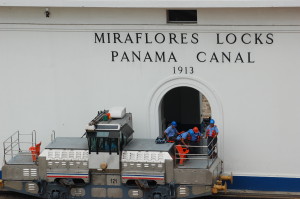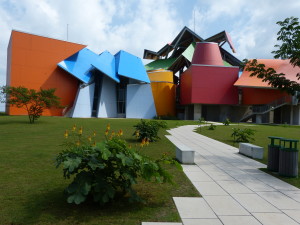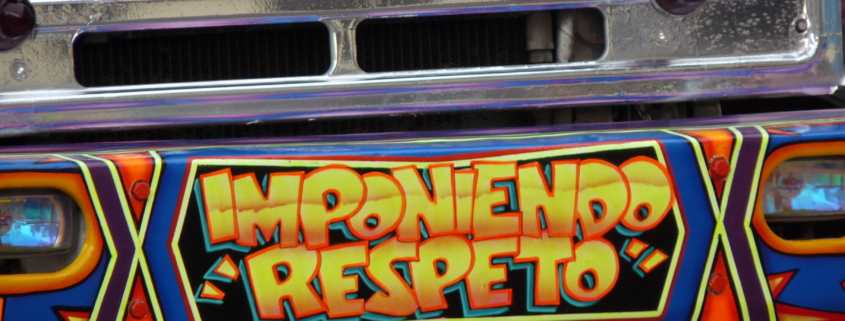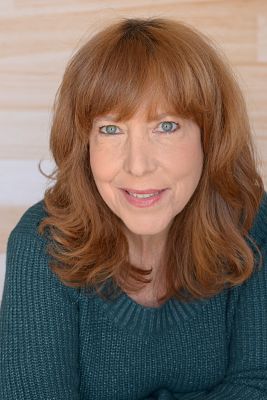Navigating Intersections in Panama City
I have always been struck by the fluid lane-changes and cultural mash-ups that are part of day-to-day life in Panama, but never more so than on this year’s trip—one of at least twenty that I have taken since meeting my Panamanian husband in New York over thirty years ago.
Over time, Panama City has become my second home, and Spanish, my second language. My cultural fluency improves with every visit. Still, it always takes a few days before the personality and patois of the country makes sense to me, before I am able to shed an American perspective for one that’s transnational and transcultural—for one that reflects América. Panama is a complex mix of Afro-Antilleano, Afro-Colonial, Jewish, Chinese, Kuna, and other indigenous communities. As in all of Latin America, Spanish influences are everywhere and relations with the U.S. are complicated. Navigating Panama’s cultural intersections—and its particular blend of class, gender and race intersectionality—is not for the faint of heart. The same holds true for surviving Panama’s traffic clogged intersections (and occasional circles of death). I’ll never get used to driving here but, for the full Panamanian experience, it has to be done.
Day three of our trip, I decided it was time to get behind the wheel. Two of our nieces had recently graduated from high school and I wanted to swing by their homes to drop off presents. My reluctant husband handed me the keys. It was mid-day, a few days before Christmas, and traffic was already bad. In order to avoid MultiPlaza, the sprawling high-end mall in the middle of the city, I turned onto a narrow side street in a residential area. Cars were moving. There was a steady flow of traffic going in the other direction. My side of the road was almost empty. I gained confidence and picked up speed.
“Este Yaris es bien zippy,” I told my husband. My mind wandered as I tried to come up with a good word for zippy in Spanish.
“Hueco,” my husband warned. “It’s not an SUV, Rochelle.”

Photo Credit: R. Newman-Carrasco
Zippy would have to wait. A hueco is a cross between a pothole and a ditch. In the land of the Canal, also known as the Big Ditch, huecos can be very wide and very deep. In spite of oncoming traffic, I knew I should swerve out of my lane and drive on the wrong side of the road for a minute. My husband could do that without blinking an eye. I couldn’t. My Panamanian reflexes had not kicked into gear. Bam. The small Toyota Yaris sank. A loud thud was followed by a jolt and a metallic scraping sound. I winced, trying to act calm, and slowed down in case there were more holes to come. The driver of the giant Lexus SUV behind me started leaning on her horn. I cursed, in English, then accelerated and hoped for the best.
“Tranque,” my husband groaned a few blocks later.
Panamanian gridlock is impressive and can be caused by anything from protesters to broken down buses to cars spilling onto main roads from supermarket parking lots. No sooner had I become aware of the traffic jam up ahead than my attention shifted to the car in front of me. It was backing up while I was still moving forward. I slammed on the brakes in time to prevent a collision. I cursed in Spanish because it made me feel better. He was just doing what Panamanians do—changing directions, oblivious to what was going on behind him. It was just how things were done. The more fearless I got about sticking my car into oncoming traffic, cutting off buses, and ignoring signals and stop signs, the sooner I found my Panamanian flow. Assume nothing, I would tell myself. Cars were coming from every direction. They were not interested in playing by my U.S. driving school rules. It looked like chaos to me, but it was my job to drive, not to judge.
We arrived at my niece’s house. Alive. The anxiety of unruly intersections was replaced by a series of other cultural collisions the minute we walked in the door. Like driving, capturing the essence of a day in the life of Panamanians doesn’t work when I am in a U.S. state of mind, when I am relating to others as other, when I am not able to let go and, instead, cast myself in the outsider role. In spite of my bilingualism, I’m conditioned to expect monolingualism. In spite of my cultural fluency, I readily fall into the trap of the Single Story. It shouldn’t have surprised me that my trilingual, Sherlock Holmes-loving, Panamanian niece had a gift wishlist that included two Panic At the Disco CDs and the DVD of Miyazaki’s Spirited Away. Or that, upon hearing Panic At the Disco for the first time, her tío, my husband, immediately recognized a generational intersection and introduced her to Elvis Costello. It shouldn’t have surprised me that Panamanians don’t live by Ruben Blades alone. But on some level, it still did.
My youngest niece sat next to me on the living room couch, showed me her anime pencil sketches, and talked to me about the anime géneros she liked best. Before the list of genres appeared on her laptop screen, the word géneros reworked itself in my rusty bilingual brain like the subconscious rearranging of an anagram. Soon, my sister-in-law joined us, sporting her new natural hairstyle. Not only was she pleased that it made her look younger but, as an Afro-Panamanian, it also made her proud. Like most Latinas, she had learned about pelo bueno and pelo malo at an early age—only straight hair was good hair, everything else needed to be fixed. No more. Her daughters were going natural as well, she told me, before she switched gears and launched into a rave review of an award-winning documentary about the 1989 U.S. invasion of Panama, directed by a prominent member of the Panamanian Jewish community.
This was my first trip to Panama since graduating with an MFA in Creative Nonfiction. In fact, the degree was just a day old when we arrived. As soon as we were off the plane, I found myself observing and mentally recording each unfolding moment with a heightened sense of responsibility. I was in official “writer” mode and I had placed pressure on myself to capture detail and search for meaning in every scene. To make matters worse, my recent graduate presentation, entitled The Problem with Privilege, had me hyper-focused on ways in which I could constructively contribute to the literary conversation on white hegemony—on ways that I could encourage writers to consider their blind spots. Was I truly able to detect my own?

Kuna with pipe and mola
Panama is all about intersections and disruption. The isthmus united continents but divided oceans. Here, the single story is virtually impossible to hold on to for long. There is bound to be a collision or an overlap or an unexpected turn or twist; it’s built into Panama’s DNA. The country’s cultural diversity was fuelled by its position as the narrowest spot between the Atlantic and the Pacific. In the 1500s, the Spaniards were intent upon leveraging this strategic advantage. They weren’t alone. The Scottish tried, but failed, to become a world-trading nation by exploiting Panama. With the Spaniards came black slaves, some of whom, upon escaping, formed their own influential communities. Chinese and West Indian immigration started with the construction of the world’s first Transcontinental Railroad. Then, of course, there was the Panama Canal, which was started by the French and finished by the U.S. Over 100,000 workers came from Jamaica, Barbados and throughout the West Indies to build the Canal, and many died in the process. This feat of engineering also attracted immigrants and adventure seekers from around the globe, including Sinclair Lewis and Paul Gaugin. Panama’s indigenous populations include at least six distinct cultures. As an example, The Kuna (also known as Guna), are Panama’s second largest indigenous population. They were granted political autonomy and maintain their culture on their own terms, on their own land, adding yet another layer to the diverse Panamanian population. Cultural intersections abound.
Before our visit ended, my niece told me something she had learned at Panama’s new Biomuseo, the first biodiversity museum in the world. The museum was designed by architect Frank Gehry, who is married to a Panamanian. “Somos todos Panameños,” my niece said. Then she pointed me to an online article from a dated issue of Discover Magazine entitled “We are all Panamanians;” it makes its case based on the hypothesis of Steven Stanley, a paleobiologist at John Hopkins:
The uplift of this skinny little neck of land between the Americas set in motion an enormous oceanographic change that allowed the Arctic to cool; that had an enormous effect in Africa, by drying the climate and leading to the evolution of Homo. In other words, we would not exist if this little neck of land had not risen up across the ocean from where our ancestors lived.
I had arrived at my sister-in-law’s in Panamanian-driver mode. By the time I left, according to my niece, I was Panamanian. As a writer, I want to be open to this and many other possibilities. As a reader, I want the same. Diversifying and adding dimension to the literary landscape is in all of our best interests. We are all connected. We all intersect. Collaborate or crash. The problem with privilege is that it narrows perspectives, shrinks sightlines, and creates blind spots. Deluded into believing that we own the road, we see no reason to merge, yield, or get out of the way.

Biomuseo. Architect: Frank Gehry.
Carlos Fuentes once wrote, “The United States has written the white history of the United States. It now needs to write the Black, Latino, Indian, Asian, and Caribbean history of the United States.” Although best known as a Mexican writer and essayist, Fuentes was born in Panama. He lovingly refers to the country as “… a scar in the sea in the middle of the jungle,” as he reflects on the scope of Panama’s motto—Puente del mundo. Corazón del universo. Bridge of the world. Heart of the Universe. It’s what Panama is as a country. It’s what we are as writers.
Born on a small island near Puerto Rico called Manhattan, Rochelle credits her Lower East Side roots with her love of culture, humor and language. She lives in LA, has over three decades of U.S. Hispanic marketing experience, and is a recent Antioch MFA graduate. She holds a BFA in Theater from UC Irvine.






